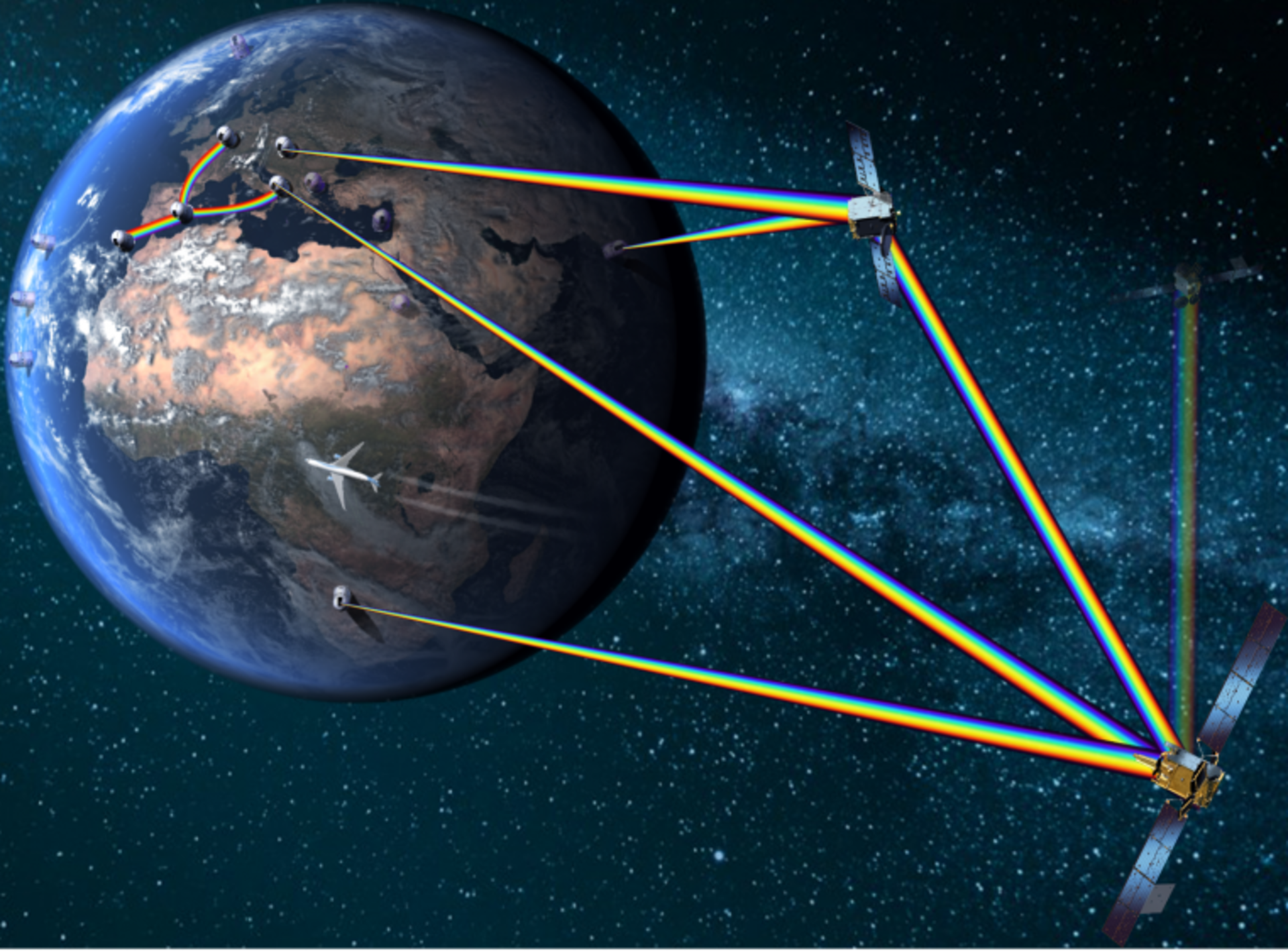16.02.2025

The European Space Agency (ESA) has jointly signed a contract with Thales Alenia Space to develop Element #2 of its High-throughput Digital and Optical Network (HydRON), an advanced laser-based satellite system that will transform the way we communicate in space. This phase will establish a satellite collector in low Earth orbit (LEO), capable of connecting different orbital layers using cutting-edge optical technology.
Just as fibre optic cables revolutionised internet speeds on Earth, laser communications are set to transform how we share data in space. Today's satellites face a growing challenge: they collect more data than they can efficiently transmit to Earth using traditional radio-frequency communications. By using laser technology instead, HydRON promises to dramatically increase the speed and security of space-based communications while reducing costs.
The system, developed with Thales Alenia Space in Italy, will work alongside Element #1 of HydRON – a ring of ten satellites in LEO, developed with Kepler Communications and announced last October – to create a comprehensive space communications infrastructure. Together, they will link satellites in various orbits – from LEO to geostationary orbit – with ground stations using laser technology.
Building Element #2
Under the new contract, Thales Alenia Space will develop a crucial component of the HydRON system: a satellite collector in LEO equipped with advanced laser communication terminals. This satellite will serve as a key relay point, receiving data from other satellites and transmitting it either to ground stations or to satellites in higher orbits. Element #2 will provide global coverage and increased data processing capacity (throughput), enhancing the amount of data that can be transmitted per second while reducing the cost of sending each bit of information.
The project brings together expertise from across Europe. Thales Alenia Space in Italy leads the development and provides the on-board packet router – essentially the 'brain' that directs data traffic through the satellite. Mynaric contributes their advanced optical communication terminals that will transmit and receive the laser signals, while the German Aerospace Center (DLR) and Officina Stellare are developing fixed and transportable optical ground stations respectively. The HydRON Control Centre will be created by Telespazio with support from Thales (Romania), and Mbryonics is contributing optical testbed facilities to ensure the system's reliability.
![[Right] Antonio Sturiale, Director of Telecommunications for Thales Alenia Space in Italy and [left] Laurent Jaffart, Director of ESA’s Connectivity and Secure Communications at the HydRON Element #2 contract signing.](https://www.esa.int/var/esa/storage/images/esa_multimedia/images/2025/02/hydron_element_2_signature/26582220-1-eng-GB/HydRON_Element_2_signature_article.jpg)
"It was an honour to sign this contract with Thales Alenia Space today, which moves us closer to establishing Europe's first optical communication network in space," said Laurent Jaffart, ESA’s Director of Connectivity and Secure Communications. "HydRON is set to maintain Europe and Canada as global leaders in the optical domain and, with the system being interoperable, it will ensure that we continue to grow ESA’s cooperation with our international partners.”
“I am really pleased Thales Alenia Space will be contributing to Europe’s technological independence in connectivity services through space,” said Giampiero Di Paolo, Deputy CEO and Senior Vice President, Observation, Exploration and Navigation at Thales Alenia Space. “Thales Alenia Space believes HydRON Demonstration System is the key enabler for the reliability and operability of a high-throughput optical network in space, paving the way for the future of commercial optical communications in Europe and globally.”
Quelle: ESA
